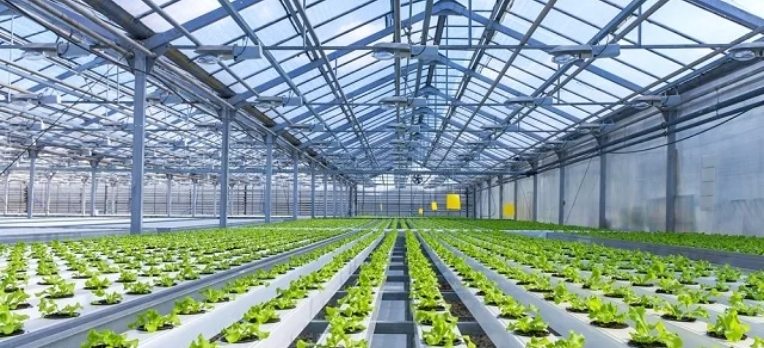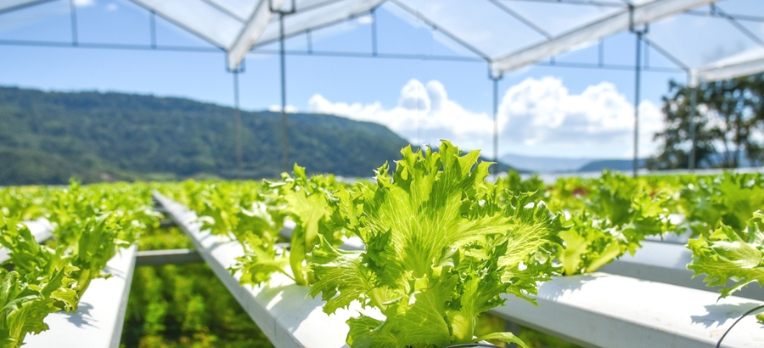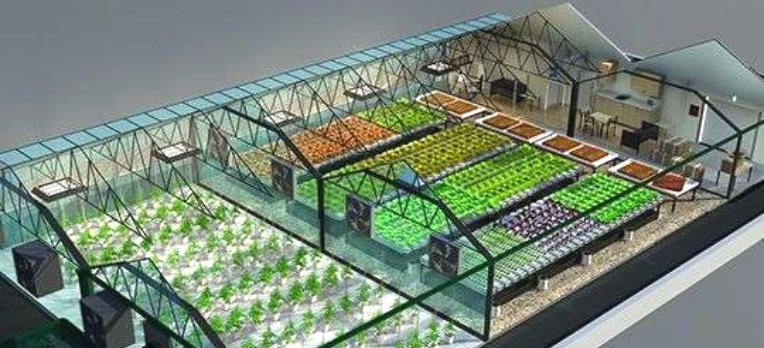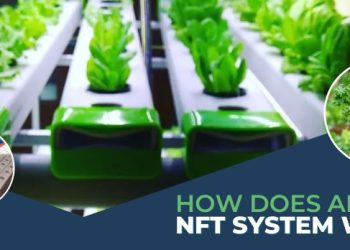
How to Set Up Your Very Own Hydroponic Rooftop Farm
Have you ever wanted to take your gardening skills to the next level? A Rooftop Hydroponic Farm setup can be the perfect way to do just that. With a Hydroponic Rooftop Farm setup, you can grow your own fruits, vegetables, and other plants in the comfort of your home with very little effort. In this blog post, we will explain the basics of how to set up your very own Hydroponic Rooftop Farm. We will also provide helpful tips on the best way to get started, what supplies you need, and how to ensure that your garden is successful.
What You'll Need
When it comes to setting up a Rooftop Hydroponic Farm, there are a few essential pieces of equipment that you’ll need to get started. Depending on the size and type of garden you plan to create, the cost of setting up your farm can vary. You may need some basic tools such as a drill, saw, and other materials like PVC pipes, drill bits, and screws. Additionally, you’ll need to purchase the hydroponic system itself. This could include grow lights, pumps, water tanks, grow beds, and a nutrient solution. As you look for the right hydroponic system for your rooftop garden, consider factors like cost, efficiency, and ease of use.
The seeds or plants you choose for your garden will depend on what kind of vegetables or fruits you’d like to grow. You’ll also need soil-less media such as coconut coir, perlite, and vermiculite to help your plants grow. Lastly, you’ll need to make sure your rooftop is prepared for the weight of the hydroponic system.
No matter what kind of Rooftop Hydroponic Farm setup you decide to go with, make sure you take into account all the necessary components before starting your project. With the right preparation and materials, you’ll be well on your way to enjoying the fruits of your rooftop farm.
Step One: Planning and Preparation
Before you start building your very own rooftop hydroponic farm setup, it’s important to plan ahead. This includes deciding where to locate your farm, as well as considering what kind of structure and materials you’ll need to build it. You should also decide how large the farm will be and what type of hydroponic system you’ll use. Additionally, you should take into account any costs associated with the rooftop farming setup, such as the cost of materials and the cost of labor. Taking the time to plan out your hydroponic farm will ensure that you have all of the necessary resources and a clear vision of what your farm will look like when complete.


Step Two: Building the Structure
When it comes to building a rooftop hydroponic farm setup, there are several components that must be considered. Firstly, you’ll need to make sure that your rooftop is properly insulated and secure, so that it can support the weight of the hydroponic system and plants. Depending on the size of your rooftop and the type of hydroponic system you choose, you will also need to factor in the cost of purchasing or renting the materials needed to build the structure.
It is important to bear in mind the overall design of your rooftop hydroponic farm setup, so that all elements fit together properly and safely. You may want to consider building trellises or frames to support the hydroponic system and plants, as well as providing protection from the weather. The right material for the frames should be chosen carefully, as it must be strong enough to withstand strong winds, but light enough not to cause too much strain on the roof.
The installation of water-tight containers is essential for any rooftop hydroponic farm setup. The containers will house the plants’ root systems, ensuring that they are kept safe from extreme temperatures and other external factors. It is important to use containers that are designed specifically for hydroponic farming, as these will provide the best results. Additionally, you’ll need to purchase other components such as pumps and air stone for the containers.
Finally, when building a rooftop hydroponic farm setup, you’ll need to factor in the overall cost of the project. Although the initial setup can be expensive, it is important to remember that once completed, it will provide you with a long-term sustainable source of produce that can save you money over time.
Step Three: Planting the Seeds
Once the structure for your rooftop hydroponic farm setup is complete, it’s time to start planting the seeds. The key to successful hydroponic farming is to select plants that thrive in a water-based environment. The most common hydroponic plants are leafy greens, herbs, and flowers.
To plant your seeds, fill your containers with grow media such as clay pellets or rockwool. Place your seeds into the grow media, cover them with a thin layer of the same material, and then add enough water until the grow media is saturated. Make sure the water is pH balanced, then add a nutrient solution.
If you plan to use seedlings, you can place them directly into the grow media without pre-soaking the seeds. You may need to adjust the lighting and temperature in order to help your plants flourish. If possible, you should try to set up a timer that will turn on the lights and provide heat throughout the day.
With the right mix of nutrients, sunlight, and temperature, you will soon see your plants growing and producing fruits and vegetables in no time! The cost of setting up a rooftop hydroponic farm will vary depending on the size of your space and the type of system you choose. However, with careful planning and consideration, you can keep the costs down and get started on your very own rooftop farming project.
Step Four: Maintaining the Garden
Once you have completed the steps outlined above, you are now ready to begin maintaining your Rooftop Hydroponic Farm setup. The most important factor when it comes to maintaining a rooftop garden is ensuring that your plants receive adequate hydration, sunlight and nutrients.
In terms of hydration, make sure to keep an eye on the water levels in your hydroponic system, adding water as needed to prevent the roots of your plants from drying out. Sunlight is also an important factor – depending on the type of plants you have chosen to grow, they may require a certain amount of direct sunlight throughout the day. Make sure to position your garden in such a way that allows for ample light exposure.
When it comes to nutrition, you will need to make sure your plants have access to the right nutrients in order to thrive. Depending on the type of hydroponic system you are using, you may need to add nutrient solutions or fertilizers regularly. You can find out more about specific nutrient needs for different plants online.
Lastly, consider the cost of rooftop farming. While some aspects of your Rooftop Hydroponic Farm setup (such as the structure) may require a sizable investment upfront, the ongoing cost of maintenance should be relatively low if done properly. In addition to nutrient and water costs, there may also be additional expenses associated with electricity (if your hydroponic system requires it) and pest control.
By investing the necessary time and effort into maintaining your Rooftop Hydroponic Farm setup, you can enjoy years of fresh produce with minimal cost and effort!
Conclusion
Setting up your very own rooftop hydroponic farm is a great way to enjoy fresh, locally grown produce year-round. With the right planning and preparation, you can make the most of your space and resources to create a thriving hydroponic garden. Of course, there is a cost associated with rooftop farming, but when you consider the amount of fresh produce you will be able to enjoy with your own garden, it’s definitely worth it! Thanks to advances in hydroponic technology, rooftop hydroponic farms are becoming more accessible than ever before. Whether you’re looking for a fun and rewarding project or want to provide fresh, organic produce for yourself and your family, setting up a rooftop hydroponic farm is a great way to go.
Contact us at the Consulting WP office nearest to you or submit a business inquiry online.
Related Post
-
How to Build Your Own Hydroponic NFT Channels in 5 Easy Steps – InHydro
Hydroponics is a modern and innovative method of growing plants without the need for soil. Instead, plants are grown in nutrient-rich water solutions, allowing them to absorb all the essential nutrients they need for healthy growth.
09/05/2023 Read more -
Growing Vertically with Hydroponic NFT Channels – InHydro
The hydroponic HDPE NFT channels are designed to provide a constant flow of nutrient solution to the roots of the plants. These channels are made from high-density polyethylene (HDPE), which is durable and lightweight, making it ideal for hydroponic applications.
27/04/2023 Read more -
Hydroponic NFT Channel – InHydro
The Nutrient Film Method When it comes to vertical farming and growing leafy greens like spinach, kale, Swiss chard and rocket as well as herbs, flowers and medicinal plants, Channels, also known as NFT Channels, are the ideal hydroponics system.
20/04/2023 Read more -
How to Grow Fresh and Healthy Hydroponic Food at Home | InHydro
Growing fresh and healthy hydroponic food at home is easier than you think. With the help of Inhydro, you can set up your own hydroponic farm setup and start growing your own food right away.
07/04/2023 Read more -
InHydro Guide to Starting a Hydroponic Farm on a Budget
Are you looking for a way to start a hydroponic farm on a budget? If so, Inhydro has you covered! Inhydro’s Guide to Starting a Hydroponic Farm on a Budget provides an in-depth look into the cost and investment required to set up a hydroponic farm, as well as the potential profit margins.
06/04/2023 Read more -
How Does an NFT Hydroponic System Work? | InHydro
Hydroponic NFT systems are becoming increasingly popular as a method of growing plants indoors. They are a great way to get into hydroponics without the need for a lot of space or equipment.
03/04/2023 Read more -
How to Grow Microgreens at Home | InHydro
Microgreens System is an easy, affordable way to enjoy fresh, healthy microgreens from the comfort of your own home. Microgreens are nutrient-dense, flavorful greens that can be used in salads, soups, smoothies, sandwiches, and more.
31/03/2023 Read more
Related Post
-
How to Build Your Own Hydroponic NFT Channels in 5 Easy Steps – InHydro
Hydroponics is a modern and innovative method of growing plants without the need for soil. Instead, plants are grown in nutrient-rich water solutions, allowing them to absorb all the essential nutrients they need for healthy growth.
09/05/2023 Read more -
Growing Vertically with Hydroponic NFT Channels – InHydro
The hydroponic HDPE NFT channels are designed to provide a constant flow of nutrient solution to the roots of the plants. These channels are made from high-density polyethylene (HDPE), which is durable and lightweight, making it ideal for hydroponic applications.
27/04/2023 Read more -
Hydroponic NFT Channel – InHydro
The Nutrient Film Method When it comes to vertical farming and growing leafy greens like spinach, kale, Swiss chard and rocket as well as herbs, flowers and medicinal plants, Channels, also known as NFT Channels, are the ideal hydroponics system.
20/04/2023 Read more







